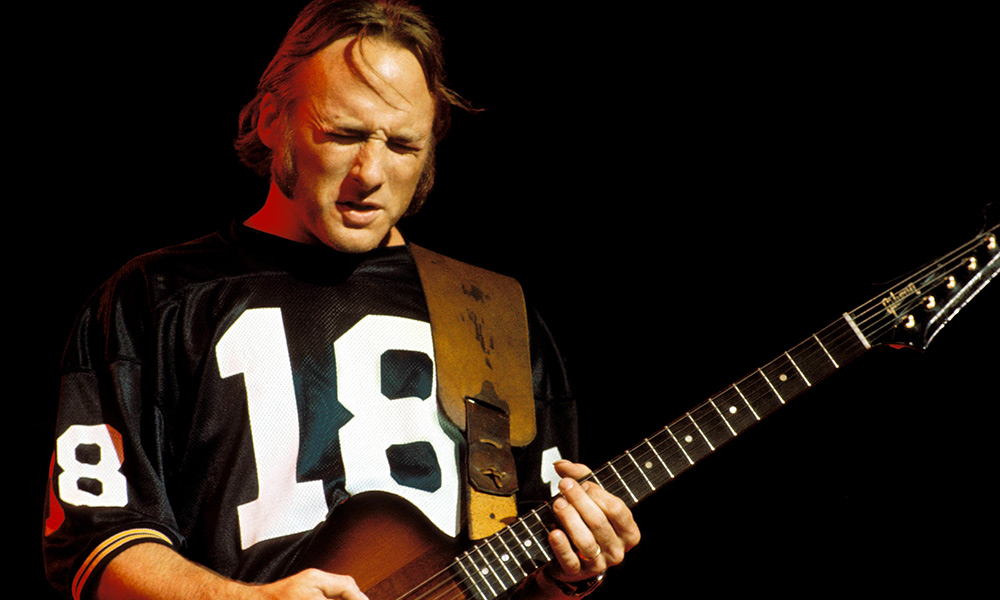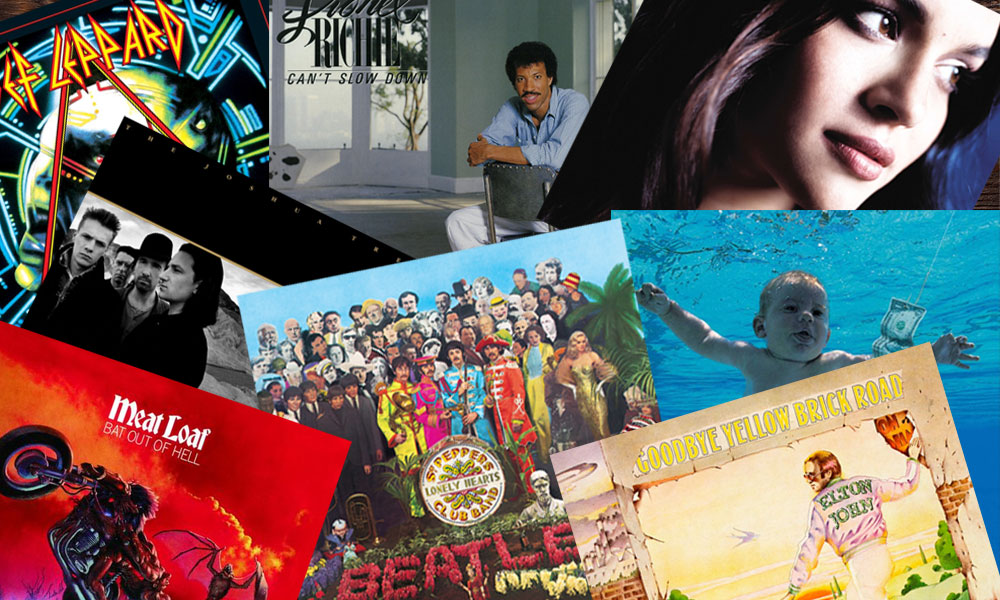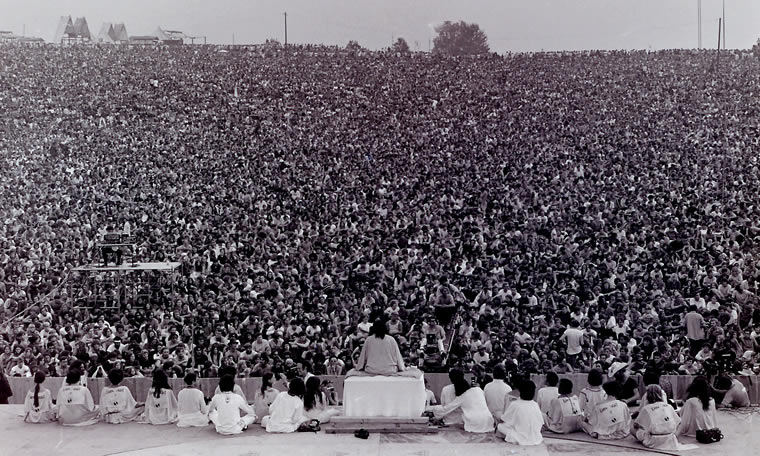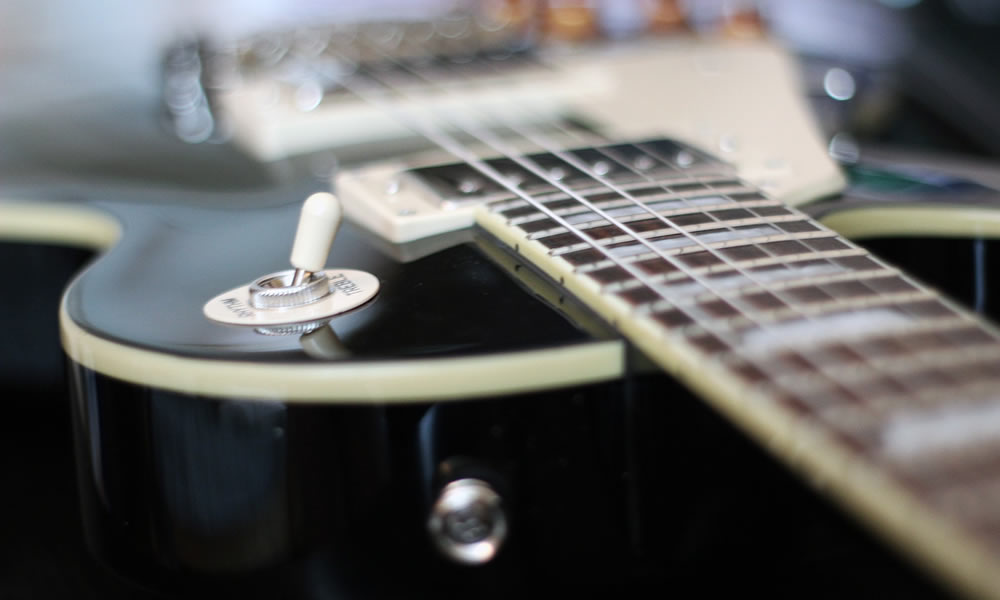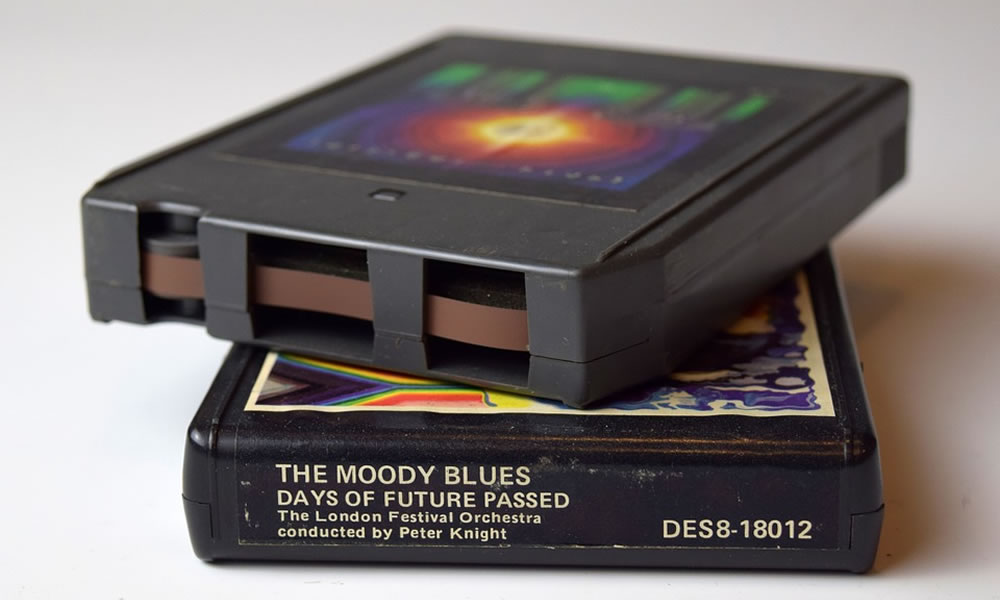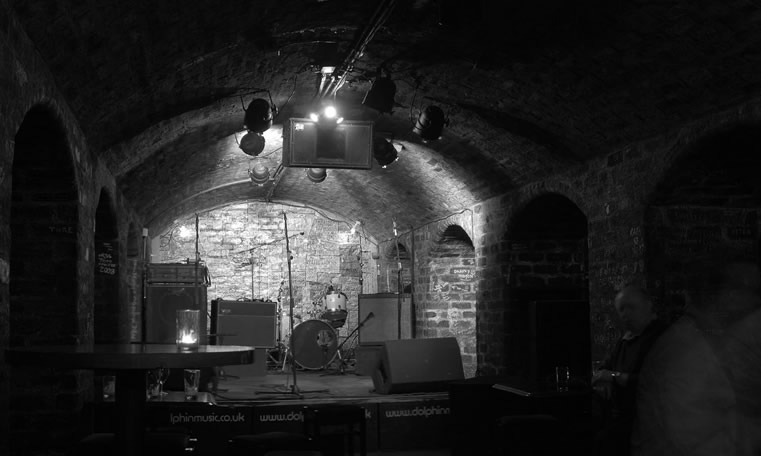The Doors – The Doors
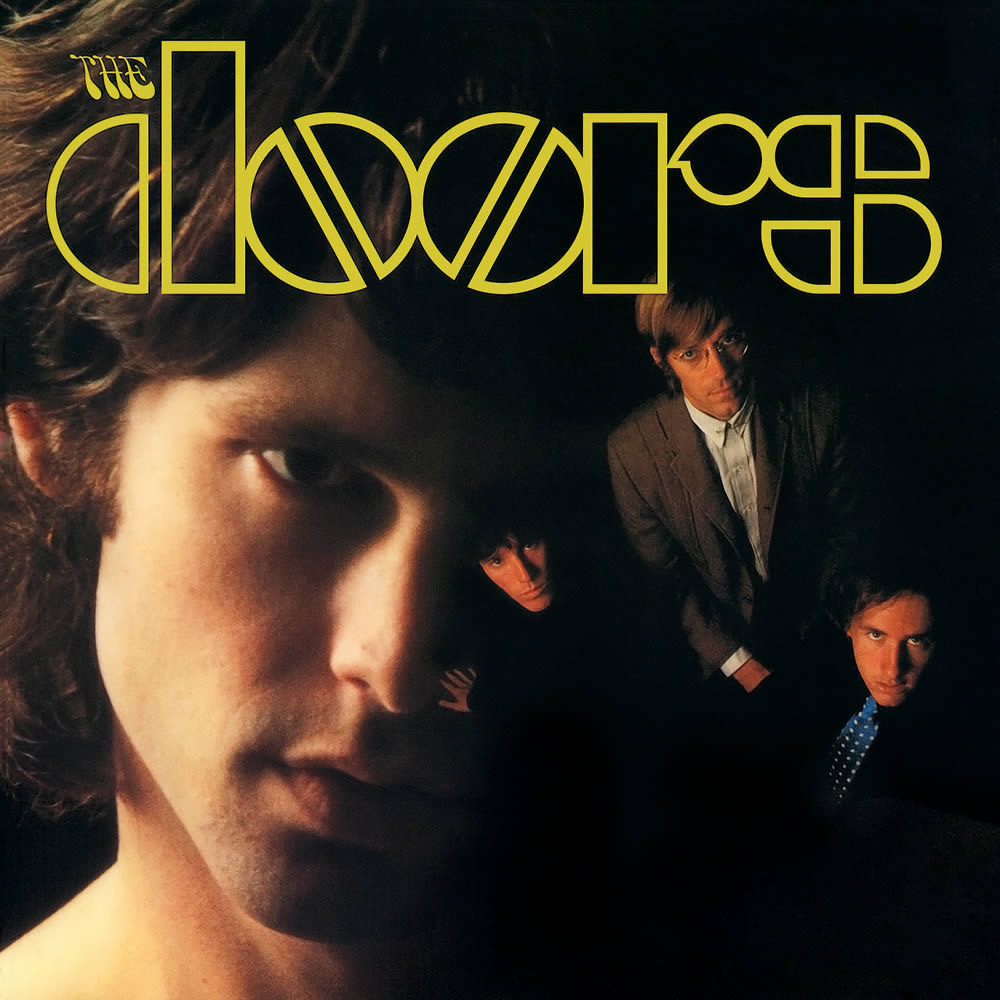

The Doors’ gestation goes all the way back to a chance meeting between two students at the University of California, Los Angeles (UCLA) film school. Jim Morrison and Ray Manzarek knew each other from college and became reacquainted one day on LA’s Venice Beach in July 1965, when Morrison, a poetry fan, told Manzarek he had been writing songs and, at Manzarek’s encouragement, sang Moonlight Drive. Manzarek later said: ‘When he sang those first lines – ‘Let’s swim to the moon / Let’s climb through the tide / Penetrate the evening / That city sleeps to hide’ – I said ‘That’s it’. I’d never heard lyrics to a rock song like that before. We talked a while before we decided to get a group together and make a million dollars.’
Ray Manczarek (he changed the spelling to ‘Manzarek’ when The Doors officially started) had moved to LA from Chicago in 1962, singing and playing occasional piano with the group formed by his brothers Rick and Jim, Rick & The Ravens. The Ravens played their own originals plus some cover songs, so it was fitting that when Jim Morrison sat in with the band on impulse he performed Louie Louie as his first public performance, losing his voice in the process. Soon after, Morrison accepted Ray Manczarek’s offer to join the band, which by then included drummer John Densmore of The Psychedelic Rangers, who had met Manczarek in meditation classes, joining The Ravens in August.


On September 2, 1965, The Ravens laid down six songs at World Pacific Jazz Studios, all of which would become future Doors numbers, with lyrics by Jim Morrison: Moonlight Drive, My Eyes Have Seen You, Hello, I Love You, Go Insane, End Of The Night and Summer’s Almost Gone. The three-hour session featured Morrison on vocals, Ray Manczarek on piano/backing vocals, John Densmore on drums, Rick Manczarek on guitar, Jim Manczarek on harmonica and bass player Pat Sullivan, moonlighting from her band Patty & The Esquires. Recorded as a demo, the band had no success with it, and Rick and Jim Manczarek quit the group, who added guitar player Robbie Krieger, another former member of The Psychedelic Rangers. Krieger brought with him a knowledge of a wide range of guitar styles, including bottleneck guitar, which Jim Morrison apparently loved. The band’s first rehearsal with Krieger was at a garage belonging to a friend of theirs, Hank Olguin, situated behind a Santa Monica Greyhound bus depot in Venice, CA. The first song the four-piece performed was Moonlight Drive, according to Krieger.
In October 1965, the band changed its name to The Doors at Jim Morrison’s suggestion. A fan of both Aldous Huxley and William Blake, Morrison took the name from a line in Huxley’s book The Doors Of Perception: ‘If the doors of perception were cleansed everything would appear to man as it is, infinite.’ Huxley himself was referencing William Blake’s The Marriage Of Heaven And Hell, so The Doors had two literary references in one, including a psychedelic connection.
In the short term, the Ravens’ demo disc paid off, because in October 1965 The Doors managed to line up a meeting with Columbia Records talent executive Billy James, who notified the band two days later that he wanted to sign the band to a five and a half year contract. The band began auditioning for club owners in order to start playing residencies in the LA area but were consistently turned down for not having a bass player, the players they had tried out never seeming to fit. The problem was solved when, in December 1965, Ray Manzarek, now using the new spelling, decided to play bass lines on the little-known Fender Rhodes PianoBass, a small 32-note keyboard playing in the lower range of a piano, eliminating the need for a bass player. He even got Columbia Records to pay for it. However, by late April 1966, having heard nothing further from Columbia, the band asked to be released from their contract, which apparently Columbia was happy to do, perceiving no major action on the horizon.
From early 1966 onwards The Doors started playing regularly in LA, initially scoring a residency at the London Fog club before graduating to the prestigious Whisky a Go-Go in May. Ray Manzarek said in 1972: ‘Ronnie Haran, the booking agent for the Whisky a Go-Go, came down to hear us, immediately fell in love with Jim, [and] loved the music.’ ‘We went from making $5 a night to union scale, $135 a week each – we felt like we were in heaven! We played with Them, Love, The Seeds, The Turtles, The Byrds. We were the openers.’
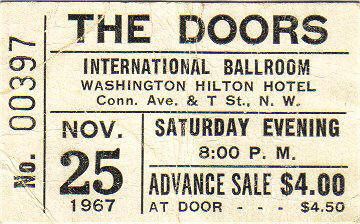

Quite soon after The Doors started performing at the Whiskey, Arthur Lee from Love badgered Elektra Records owner Jac Holzman to come and see the band. Love were signed to Elektra, and were performing at the Whisky too, not unnaturally expecting Holzman to attend. Holzman did turn up and was persuaded to stay on to see The Doors, although his first viewing left him unconvinced. Arthur Lee’s approval meant a lot, though, so Holzman persisted, eventually seeing the band four times, after which he decided ‘this was no ordinary rock ‘n’ roll band’.
An interesting combination occurred when The Doors opened for Them, featuring a young Van Morrison, on June 18th. The Doors jammed with Them at the end of the last show of Them’s booking, playing a 25-minute version of Wilson Pickett’s In The Midnight Hour followed by a further 20 minutes of Van Morrison’s Gloria. Van Morrison later commented that this performance with The Doors was one of the highlights of his career with Them. ‘It’s funny because we never knew Van Morrison or what he was like until he came to the Whisky, and there he was stomping around, throwing the mike just like Jim would, you know – oh no, my God, another Morrison!’ said Robby Krieger. Future Doors producer Paul Rothchild was to say ‘The thing that was so interesting to me was to learn how much chaos there was inside Them. It’s almost as if Jim studied their chaos and brought it into The Doors.’
On August 15th, Jac Holzman returned to the Whisky, bring in with him prospective producer Paul A. Rothchild. Rothchild didn’t rate the band’s first set, but stayed to hear the later show and was impressed enough for Holzman to offer to sign the band, who hired an attorney, taking till November to settle the terms.
Notwithstanding, arrangements were made to go into the studio to record, with Rothchild behind the desk. Just after The Doors played their final performance at the Whisky, fired by the venue management over the ‘obscenity’ in the lyrics to The End, the band recorded their debut album, from August 24 to 31, 1966 at Sunset Sound Recording Studios. Supervised by Paul Rothchild, the sessions were engineered by Bruce Botnick, who ended up producing LA Woman, with an uncredited Larry Knechtel playing bass guitar on Soul Kitchen, Twentieth Century Fox, Back Door Man, I Looked At You and Take It As It Comes. Knechtel, subsequently well-known for playing the piano on Bridge Over Troubled Water and the guitar solos on Guitar Man by Bread, of whom he was a later member, was a well-respected LA player and a veteran of many Phil Spector sessions as a member of his Wrecking Crew.
According to Rothchild, he and the group went for feel rather than perfection: ‘We didn’t stop at a perfect take, we stopped at one we felt had the muse in it. That was the most important thing, for the take to have the feel, even if there were musical errors.’
A couple of songs were recorded that didn’t make it on to the album, including the recurring Moonlight Drive, which did eventually make it on to the second album Strange Days. The album was recorded only on 4 tracks of audio tape, so most of the performances were ‘live’ in the studio, with one track left spare for overdubs, but the band had played so many live dates that year that they were able to nail convincing performances of all the songs, all of which they knew inside out.
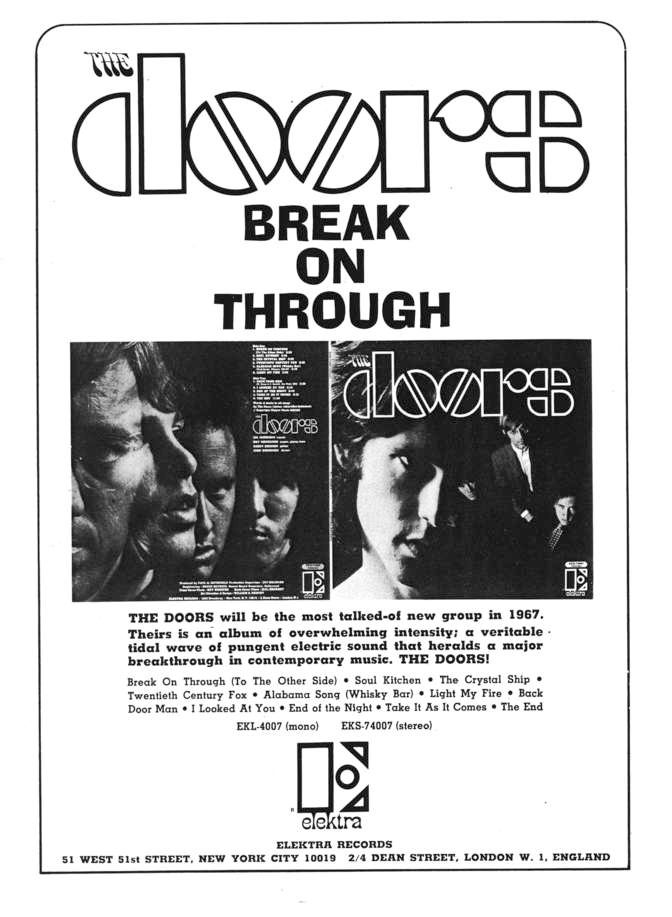

Jim Morrison, however, had already indulged in every substance he could, and had no fixed home, wandering all over LA and in the process ingesting quantities of drugs and alcohol. This meant that the band had to catch the muse where they could, the recordings reflecting the communal state of the four musicians.
Strong as the band’s original material was, the album also contained two covers: the Howlin’ Wolf blues classic Back Door Man, written by Willie Dixon, and Alabama Song (Whisky Bar). Alabama Song was originally published in Bertolt Brecht’s Hauspostille in 1927 and was set to music by Kurt Weill for the ‘Songspiel’ Mahagonny in the same year.
Most of the album features songs of around two or three minutes, in keeping with most songs created in 1966, but with two songs at least, The Doors approached their recording with the same improvisatory zeal as their gigs. Light My Fire ended the first side of the original vinyl LP, and came in at 7 minutes and 6 seconds, including long solos by Ray Manzarek on Vox Continental organ and Robby Krieger on guitar. Krieger recalled an instruction from Jim Morrison to the band to write more songs, and duly went home to work on one. Krieger said: ‘I knew it had to be pretty heavy because Jim’s songs were very heavy. So I knew it had to be about earth, air, fire or water. I tried so many combinations: ‘Come on baby, breathe my air…come on, baby, share my earth’ It was pretty embarrassing until I finally got it to ‘Come on, baby, light my fire.’ That knocked Jim out.’
Ray Manzarek said: ‘Robby came in with the song and then we all went to work on it. The Doors’ communal mind took over. John Densmore put the Latin beats on it; Jim put the second verse in it. I put the solos and the introduction to it and Robby was the original songwriter. And that’s how it all came about. So we all did it together.’ The final piece was the classical-sounding baroque keyboard introduction, which Manzarek provided: ‘We were at the beach house in Venice and I told John, Robby and Jim ‘Hey, go out to the beach and let me think about this for a second. You guys just go.’ And they walked out to the beach… and it just sort of fell into place as the introduction, the last thing needed for Light My Fire.
The other track that defined The Doors on the album was the much-remarked about The End. In the spirit of live performance, only two takes were done of the song, on successive days. Morrison was apparently high on acid to really capture the song on the first night, but totally took control on the next, capturing a piece of musical history. Ray Manzarek: ‘When it came time to do The End, a very different mood took Jim over. He became shamanistic and led the small group on a shamanistic voyage. He put himself into a trance and, through that, put us all into a trance.’
Producer Paul Rothchild described it as ‘the most awe-inspiring thing I’d ever witnessed in a studio… The studio was completely dark except for a candle in Jim’s booth and the VU meters on the mixing board; all the other lights were off. It was a magic moment, and it was almost a shock when the song was over.’
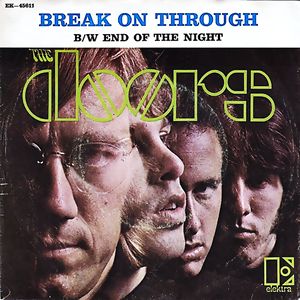

For the final album version, Paul Rothchild used both takes, editing the song just before Morrison sings ‘The killer awoke before dawn…’, at around 6:24. Morrison himself said: ‘We didn’t start out with such big ideas. We thought we were going to be just another pop group, but then something happened when we recorded The End. We saw that what we were doing was more important than just a hit song. We were writing serious music and performing it in a very dramatic way. The End is like going to see a movie when you already know the plot. It’s a timeless piece of material… It was then that we realized we were different from other groups. We were playing music that would last for years, not weeks.’
In November The Doors officially signed with Elektra for seven albums, in return for $5,000 (around $75,000 in 2010 dollars), with a further $5,000 paid for the band’s publishing rights, although years later the band were able to buy them back. Elektra boss Jac Holzman decided to hold back the release of the album until the beginning of 1967 to give The Doors more attention and booked a billboard on LA’s Sunset Strip to advertise the album, the first ever for a rock album.
The band also reluctantly agreed to release Break On Through as their first single, although the lyric ‘She gets high / she gets high / she gets high’ was changed to She gets / she gets / she gets’ to appease censorious radio stations.
Break On Through failed to break through at radio and peaked at #126 on the chart, so attention switched to Light My Fire. Actually, Elektra had planned to release Twentieth Century Fox, but LA DJ Jim Ladd reported that he was getting requests for Light My Fire which he couldn’t play because of the song’s length. After an attempt to re-record the song proved unsatisfactory, the band agreed to let Paul Rothchild edit the album version down to less than 3 minutes, excising the long solos in the middle of the track.
Even then it wasn’t an instant smash, but finally airplay built up, helped by the ‘counter-culture’ explosion in the US during 1967, and eventually, Light My Fire became the first single from Elektra Records to reach #1 on the Billboard Hot 100 singles chart, selling over a million copies.
The Doors made a steady climb up the Billboard 200, ultimately becoming a huge success in the US once Light My Fire scaled the charts, with the album peaking at #2 on the chart in September 1967 and going on to achieve multi-platinum status.
In Europe, the band would have to wait slightly longer for similar recognition, with Light My Fire originally stalling at #49 in the UK singles chart and the album failing to chart at all. However, in 1991, buoyed by the high profile of Oliver Stone’s film The Doors, a re-issue of Light My Fire made #7 in the singles chart and the album made #43. It eventually spent more time on the UK chart than any other Doors studio album.
The album is #42 on Rolling Stone’s ‘500 Greatest Albums of All Time’ and is also in ‘The Rolling Stone Hall Of Fame’.


